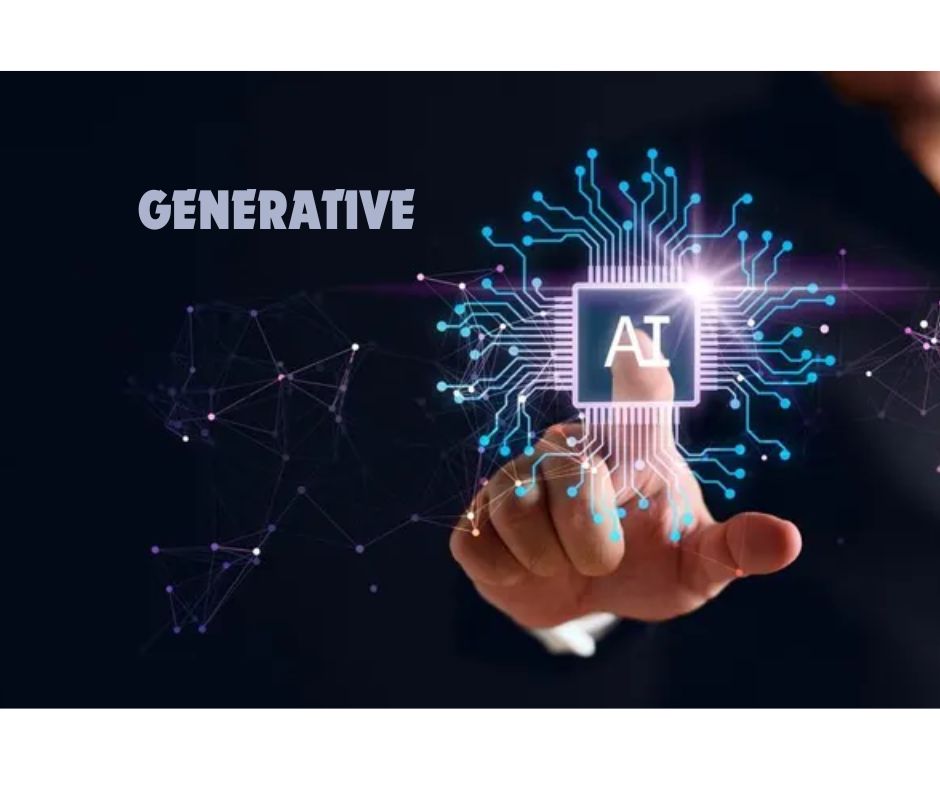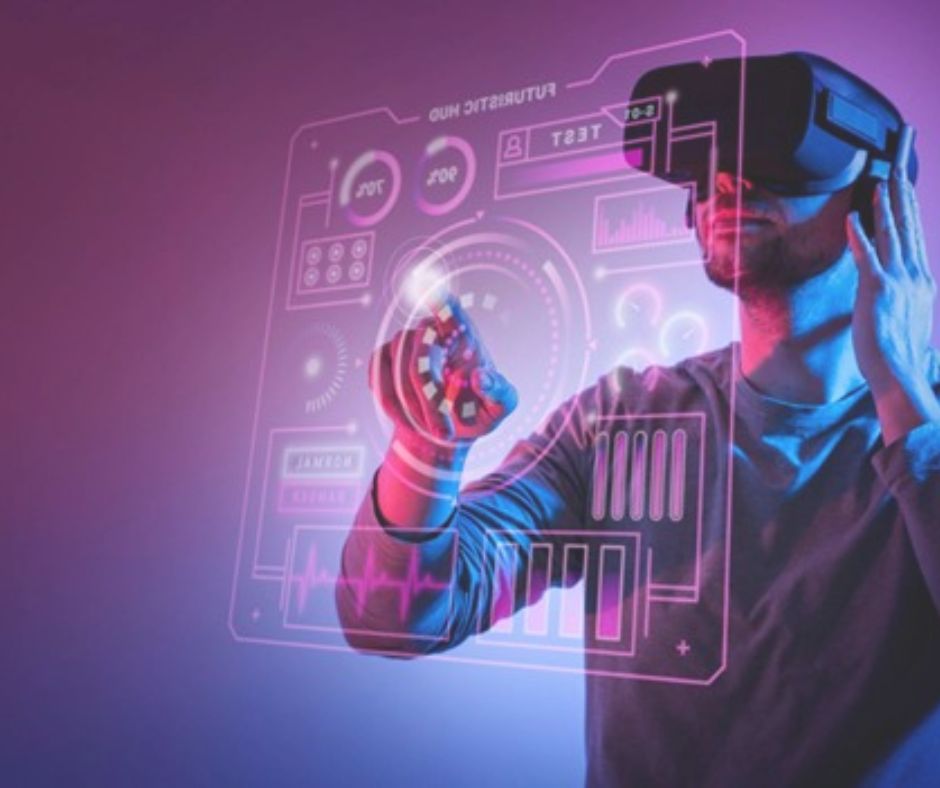Emerging technologies are rapidly reshaping industries and redefining job roles in the workplace for everyone. For BCA and MCA students, it is crucial to stay updated on these IT trends and master the ones that match their career goals. This can help them be ready for the future of tech and open doors to many new and exciting career opportunities.
Here are some of the emerging technologies and IT trends you should closely follow:
1. Generative AI

Generative AI is certainly a game-changer in the realm of emerging technologies. Moving beyond basic chatbots and image generators, Generative AI encompasses AI systems capable of creating videos, writing code, designing products, and even composing music.
These disruptive technologies are revolutionising creative industries by automating tasks that once required humans to handle. The applications of generative AI are quite vast and varied. It can be used to:
- generate realistic videos,
- write sophisticated code,
- design innovative products, and
- compose original music pieces.
This ability of Generative AI is driving significant changes across various sectors, including media and entertainment, software development, and product design. It not only helps with boosting efficiency and streamlining workflows but also spurs new ideas, innovations, and creative solutions.
The future of tech looks promising in this area and IT professionals love Generative AI as it is a gateway to pioneering roles in innovation and development.
2. Edge Computing
Edge computing is one of the most recent IT trends that aims to reduce latency in real-time applications. It involves processing data closer to where it is generated or at the ‘edge’ of the network. It means that, in edge computing, data is processed locally instead of being sent to a central server. This is the reason it has faster response times and enables real-time decision-making.
It is an incredibly important trend for emerging technologies like:
- autonomous vehicles,
- smart cities, and
- industrial automation
that require real-time inputs and immediate data processing and action.
In autonomous vehicles, edge computing is necessary for real-time navigation and safety features. Smart cities use edge computing to manage traffic, energy usage, and public services efficiently. In industrial automation, it supports seamless and rapid machine-to-machine communication.
However, edge computing is still evolving. It faces challenges like infrastructure requirements and data security concerns. Ongoing developments and innovations are expected to encourage its broader adoption as it can significantly improve the functionality and efficiency of smart gadgets and other emerging technologies that are popping up like mushrooms everywhere.
3. Web3 and Decentralised Technologies

From governance to technology, decentralisation seems to be the way to go. When it comes to emerging technologies, Web3 represents a shift towards decentralised internet infrastructure. As data ownership and control become more distributed across a network, the web is becoming more efficient, resilient, transparent, and equitable. The reliance on central servers has reduced significantly.
At the heart of Web3 are disruptive technologies like blockchain, which facilitate this transformation. Blockchain technology helps in maintaining a decentralised and immutable ledger for transactions and data. It is more secure and transparent as no single entity has control over the data.
The applications of decentralised technologies include:
- reducing the risk of data breaches,
- ensuring transparency in transactions and data handling, and
- promoting equity by enabling more democratic access to information and resources.
Some of the exciting breakthroughs are expected in Web3 that will impact several industries, including finance and healthcare. And we advise our BCA and MCA students to keep a tab on this field if they want to be prepared for the future of tech.
4. Quantum Computing
Quantum computing is another exciting frontier in the world of emerging technologies. Unlike what we see today quantum computers use quantum bits (qubits) to perform complex calculations at unprecedented speeds, solving problems that are currently intractable.
While still in its early stages, quantum computing is rapidly advancing. However, it faces significant technical and practical challenges, including maintaining qubit stability and developing scalable quantum algorithms.
Quantum computing holds the potential to revolutionise industries such as:
- drug discovery,
- financial modelling, and
- complex problem-solving.
Its ability to perform high-speed calculations is uncanny and can lead to breakthroughs in offering solutions to the world’s most challenging problems. In materials science, it can be used to design new materials with enhanced properties. It can optimise supply chains and logistics for improved efficiency. It can even be used in advanced climate modelling for more accurate predictions and mitigation strategies.
The potential is endless.
5. Extended Reality (XR)

Extended Reality (XR) encompasses:
- Virtual reality (VR),
- Augmented reality (AR), and
- Mixed reality (MR).
VR is an immersive technology that creates a fully simulated environment like a game or a movie that we can see by wearing a device or a headset. It isolates users from the real world. AR is a technology that overlays digital content onto the real world. For example, we might see a dolphin jumping up from the floor – enhancing our perception of our environment.
MR is a blend of VR and AR. Here, we can see digital and real-world elements interacting in real time, creating new environments and visualisations. These technologies create immersive experiences that can be used for:
- training,
- collaboration, and
- entertainment.
XR is already making waves in various sectors. In training, it provides realistic simulations for medical, military, and technical education. For collaboration, XR enables remote teams to interact in a shared virtual space. In entertainment, it offers immersive gaming and interactive experiences.
Building the necessary infrastructure for XR involves developing robust hardware and software platforms. IT professionals are at the forefront of creating applications that leverage XR to its fullest potential, ensuring seamless and engaging user experiences.
As XR technology advances, its mainstream adoption is inevitable. The future of tech in this domain will see XR becoming an integral part of daily life, from education and work to entertainment and social interaction.
6. Sustainable Tech
Sustainable technology is crucial in addressing environmental challenges. IT professionals are increasingly focused on developing technologies that:
- reduce energy consumption,
- minimise waste, and
- promote a circular economy.
Current trends include improving data centre efficiency and adopting sustainable software development practices. These initiatives aim to reduce the carbon footprint of IT operations and contribute to a greener future.
Innovative solutions in sustainable tech involve promoting a circular economy, where resources are reused and recycled. New developments in green technology are also emerging, providing more sustainable options for energy and resource management.
The future of sustainable tech is centred around achieving long-term sustainability goals. The impact on the IT industry will be significant, with a growing emphasis on creating technologies that support environmental sustainability.
7. Cybersecurity Mesh

As workforces become more distributed, traditional security perimeters are dissolving. Cybersecurity mesh offers a flexible and adaptive approach to protecting data and systems, ensuring security in a decentralised environment.
Cybersecurity mesh provides several advantages, including flexibility, adaptability, and enhanced protection for distributed workforces. It enables IT professionals to implement security measures that are tailored to specific needs and environments.
Implementing a cybersecurity mesh involves deploying key components and technologies that ensure robust security. These strategies focus on protecting data and systems across different network nodes and environments.
The evolving threats in the digital landscape necessitate staying ahead in cybersecurity. The future of tech in this area involves continuous innovation and adaptation to protect against emerging threats and ensure data integrity and security.
Conclusion
Emerging technologies are reshaping the future of tech, offering exciting opportunities and challenges for IT professionals. For BCA and MCA students from SMS Varanasi, staying updated with these IT trends is crucial for career growth and success.
By exploring and mastering these technologies, students can position themselves at the forefront of innovation and development in the ever-evolving field of information technology.

